October is LGBT History Month, and at TransGuys.com we’re taking this opportunity to explore some of the vast history of men of trans experience. Learning about those who came before us, it’s hard not to feel great respect for these pioneers, most of whom faced extreme prejudice and risked their lives to be true to themselves.
Gender Fluidity Along the Nile
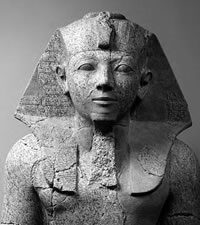 Hatshepsut (c. 1479–1458 BC) was one of Egypt’s most successful pharaohs, ruling Egypt for almost 22 years and ushering in a period of peace and prosperity. No word existed for a female ruler, so she used the male title. She also wore men’s clothing and a false golden beard, and used both male and female pronouns.
Hatshepsut (c. 1479–1458 BC) was one of Egypt’s most successful pharaohs, ruling Egypt for almost 22 years and ushering in a period of peace and prosperity. No word existed for a female ruler, so she used the male title. She also wore men’s clothing and a false golden beard, and used both male and female pronouns.
Historians have claimed that Hatshepsut’s concern for preserving tradition was behind her male presentation, and she reportedly never gave up on feminine displays of jewelry and make-up, but is it possible that her seemingly fluid gender expression is one of the earliest accounts of a trans male life experience?
All too often, the gender identity of historical trans men has been ignorantly or deliberately disregarded—stolen histories. Indeed, calculated efforts were made to erase all record of Hatshepsut’s reign following her death. However, there’s also the risk of erroneously appropriating Hatshepsut’s life story by claiming more than 3000 years later that she was trans. The truth is that we’ll never know for certain how Hatshepsut personally identified, but it’s clear that she went to extraordinary effort to present as a man.
Transformations In Rome
Looking to Classical Antiquity, we can find a few references to the “transformation of females into males,” as the Roman author Pliny (d. 113 AD) wrote about having witnessed. His contemporary, Martial (40 – 102/104 AD) also wrote about a FTM person who played sports and loved women.
Lucian (125 – 180 AD), a rhetorician and satirist who wrote in the Greek language, described a FTM individual named Megilla, who shaved his head and lived as a man “in every way.”
Megilla tells Leaena that [he] is a man named Megillus and that Demonassa is [his] wife. Lucian presents Megilla as a transgender figure of sorts, a man in a woman’s body. “I was born a woman like the rest of you,” she says, “but I have a mind and desires and everything else of a man” (Lucian). [He] expresses no desire for physical transformation… being a man seems to be more about mental characteristics as opposed to the physical. Source
Living In An Era Before Medical Transition
Fast forward to the Medieval Period, and we can find several historical accounts of trans men:
Henri Estienne reported a mid-sixteenth century French FTM who was burned alive for successfully living as a man for many years, with a trade and a wife.
A French FTM lived as a man, learned a trade, then married a woman. Soon after, he was exposed by someone from his home town who recognized him. He was offered the possibility of saving his life by returning to living as a woman. He preferred death.
David Jans, born Martigen Jens in the seventeenth century in the Netherlands, tried to to join the army at sixteen, then went to work making silk thread. He was just one of fifty-four recorded FTMs of the 1600s in the Netherlands; an unknown number more were able to live and die as men without incident.
From the Middle Ages on, countless trans masculine folks lived as men in an era before hormones and surgery.
Harry Gorman, a railroad employee, lived as a man for over twenty years, only to be found anatomically female after being admitted to the hospital for a broken limb. Gorman said he knew at least ten others who lived as men.
Charley Wilson, born in 1834 in Britain, lived as a man over 40 years until he had to move into a facility for the elderly, where authorities forced him to dress as a woman.
Ray Leonard, born in 1849, arrived in Lebanon Oregon in 1889 as the son of a shoemaker and, with his father’s help, lived as a man. Ray took over his father’s business. At age 70, Ray was found to be anatomically female during medical treatment for an illness, and died in 1921 at age 76.
Hiram Calder worked as a baker and lived as a man for thirty-five years and was discovered to be anatomically female only after his death.
Charles Durkee Parkhurst drove a stage coach for thirty years and through the Gold Rush. When Charley’s friends were dressing him in his best suit for his funeral he was discovered to be anatomically female.
20th Century Transgender Men
These historical profiles of some of the key trans men of the past century highlight their remarkable achievements. Their perseverance in the face of prejudice has earned them a place in the trans history time line.
True Sex: The Lives of Trans Men at the Turn of the Twentieth Century
At the turn of the twentieth century, trans men were not necessarily urban rebels seeking to overturn stifling gender roles. In fact, they often sought to pass as conventional men, choosing to live in small towns where they led ordinary lives, aligning themselves with the expectations of their communities. They were, in a word, unexceptional.
In True Sex, Emily Skidmore uncovers the stories of eighteen trans men who lived in the United States between 1876 and 1936. Despite their “unexceptional” quality, their lives are surprising and moving, challenging much of what we think we know about queer history. By tracing the narratives surrounding the moments of “discovery” in these communities – from reports in local newspapers to medical journals and beyond – this book challenges the assumption that the full story of modern American sexuality is told by cosmopolitan radicals. Rather, True Sex reveals complex narratives concerning rural geography and community, persecution and tolerance, and how these factors intersect with the history of race, identity and sexuality in America.
Joseph Lobdell
1829-1912
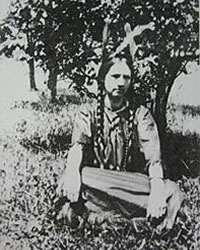 Born in 1829 to a working-class family in upstate New York, Joseph Lobdell, a skilled marksman, moved to the frontier, married a woman, and bucked 19th-century gender expectations. Joseph was eventually incarcerated in an asylum, locked away from his beloved for insisting he was a man.
Born in 1829 to a working-class family in upstate New York, Joseph Lobdell, a skilled marksman, moved to the frontier, married a woman, and bucked 19th-century gender expectations. Joseph was eventually incarcerated in an asylum, locked away from his beloved for insisting he was a man.
In an all too common example of mis-gendering, 20th-century scholars have labeled Lobdell a lesbian, but a recent book incorporating queer theory and Lobdell’s own writings makes the argument that Lobdell was indeed a transgender man. Read an interview with the author of A Strange Sort of Being: The Transgender Life of Lucy Ann/Joseph Israel Lobdell, 1829-1912.
Jack Bee Garland
December 9, 1869 – September 19, 1936
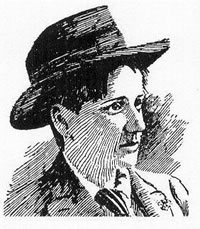
Jack Garland was a was an author, soldier, nurse and adventurer. In 1899, living as Beebe Beam, he joined the United States Army forces to participate in the Philippine War. When the captain of his ship found out his history and would not allow Beam back on the ship, the soldiers gave Beam a uniform and hid him until they were safely away from Hawaii. Beam spent a year in the Philippines and served as a Spanish language interpreter and nurse before returning to the US. After publishing a book about his time in the Philippines, Beam assumed the identity Jack Bee Garland. He devoted his remaining years to social work with various charitable organizations.
Lou Sullivan wrote a detailed biography of Jack Garland that was published in 1990 called From Female To Male: The Life of Jack Bee Garland.
Dr. Alan Hart
October 4, 1890 – July 1, 1962
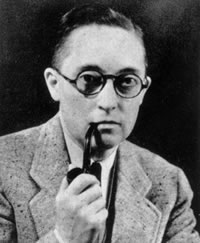 Dr. Alan L. Hart was raised in Oregon. As an adult, he sought out psychiatric counseling and surgery to live his life as a man. Dr. Joshua Gilbert, who assisted Hart with his transition, published Hart’s case in the Journal of Nervous and Mental Disorders in 1920, but kept his patient’s identity a secret.
Dr. Alan L. Hart was raised in Oregon. As an adult, he sought out psychiatric counseling and surgery to live his life as a man. Dr. Joshua Gilbert, who assisted Hart with his transition, published Hart’s case in the Journal of Nervous and Mental Disorders in 1920, but kept his patient’s identity a secret.
Hart requested a hysterectomy to eliminate menstruation and the possibility of ever becoming pregnant. This was in 1917 or early 1918, decades before testosterone therapy became available. Dr. Gilbert conceded, marking a major milestone in transsexual history: the first time a psychiatrist recommended the removal of a healthy organ based solely on an individual’s gender identity.
Hart then changed his name and married a woman, and though the relationship ultimately failed, his second marriage lasted 37 years.
Hart published five books, including four novels and a text on his medical specialty, reoentgenology/radiology. He had successful medical practices in Tacoma, Washington and Hartford, Connecticut.
Dr. Hart is perhaps best known as a pioneering epidemiologist. Hart took the Idaho Tuberculosis Hospital’s TB prevention and treatment program from nonexistent during the 1930s to among the best in the country by the time he left Idaho in 1948. Throughout the Great Depression and World War II, Hart traveled extensively through rural Idaho, covering thousands of miles to lecture, conduct mass TB screenings, train new staff and treat patients. He was among the researchers who first recognized the value of X-rays to diagnose TB. Hart’s diagnostic and treatment techniques cut the TB death toll to one-fiftieth of what it was.
After World War II, synthetic testosterone became available, making it possible for Hart to grow a beard and develop a deeper voice.
Read about more of Dr. Hart’s achievements here.
Reed Erickson
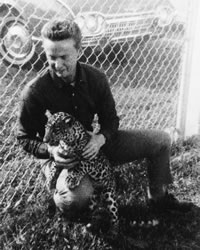 1912-1992
1912-1992
Reed Erickson is one of the most important and influential transsexuals of the 20th century. Erickson inherited his father’s fortune in 1962. The following year, he became a patient of Dr. Harry Benjamin and began the process of transition.
In 1964, Erickson launched the Erickson Educational Foundation (EEF), a philanthropic organization funded entirely by Erickson himself. Through the EEF, he laid the foundations for the Harry Benjamin International Gender Dysphoria Association, Paul Walker’s Janus Information Service, Sister Mary Elizabeth’s and Jude Patton’s J2CP, and numerous major trans activist organizations.
Erickson was also an early supporter of alternative health practices, funding what was possibly the first English-language publication on acupuncture, and supporting research into homeopathy.
Erickson lived a successful life and was rumored to be a very colorful individual. He had his demons though and died a drug addict in Mexico as a fugitive from US drug indictments.
For more information about Reed Erickson, see Dr. Aaron Devor’s research:
Devor, H. (2002). “Reed Erickson (1912-1992): How One Transsexed Man Supported ONE.” [PDF] In Vern Bullough (Ed.), Before Stonewall: Activists for Gay and Lesbian Rights in Historical Context (p. 383-392), New York: Haworth.
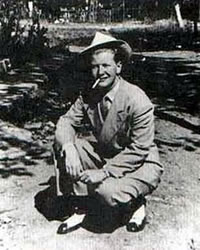 Billy Tipton
Billy Tipton
December 29, 1914 – January 21, 1989
Billy Tipton started living as a man at the age of 19, in 1933. Tipton was a well respected jazz musician and entertainer. He worked as a sideman, band leader, comedian, and booking agent. He married five times. The first wife knew of his transgender status but the rest did not.
Tipton died in 1989 and was outed by the coroner, which was widely reported in the media.
Silas Howard is developing a film about Tipton’s life.
Michael Dillon
May 1, 1915 – May 15, 1962
Laurence Michael Dillon was a British physician and the first transgender man to undergo Phalloplasty surgery. By 1939, Dillon, who was more comfortable in men’s clothes and sincerely felt that he was a man, sought treatment with Dr. George Foss. Testosterone’s androgenic effects were not yet understood, but Dr. Foss provided Dillon with oral testosterone tablets. It is believed that Dillon was the first transgender man to use testosterone therapy.
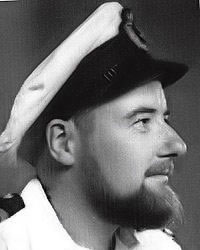 While in the hospital for a head injury, Dillon connected with a plastic surgeon, a rare specialty at the time, who performed a double mastectomy for him, likely the first-ever FTM Top Surgery. This surgeon also provided Dillon with a note that would help him have his birth certificate corrected, and put him in touch with Dr. Harold Gillies, who performed Phalloplasty surgery for injured soldiers of WWII.
While in the hospital for a head injury, Dillon connected with a plastic surgeon, a rare specialty at the time, who performed a double mastectomy for him, likely the first-ever FTM Top Surgery. This surgeon also provided Dillon with a note that would help him have his birth certificate corrected, and put him in touch with Dr. Harold Gillies, who performed Phalloplasty surgery for injured soldiers of WWII.
In 1946, Gillies agreed to perform Phalloplasty for Dillon, but officially diagnosed him with hypospadias to hide the true nature of the surgery. From 1946 to 1949, Gillies performed at least 13 surgeries on Dillon. The pedicled groin flap procedure became known as the Gillies technique and is considered the first reliable Phalloplasty procedure.
In 1946 Dillon published a book about what is now called transsexuality, Self: A Study in Endocrinology and Ethics. He wrote about “masculine inverts” and claimed this inversion was innate—a hidden physical condition that could not be changed through psychoanalysis and should instead be treated medically.
“Where the mind cannot be made to fit the body, the body should be made to fit, approximately at any rate, to the mind.” – Michael Dillon, Self: A Study in Endocrinology and Ethics
The book brought him to the attention of Roberta Cowell, who by Dillon’s hand would become the first British trans woman to receive male-to-female surgery. Though Dillon had not yet completed his medical training, he performed an Orchiectomy on Cowell, a procedure that was illegal under British law.
Unwanted press attention to his aristocratic background led Dillon to flee to India where he immersed himself in Buddhist studies, pursued ordination and took on the Buddhist name, Sramanera Jivaka. However, he was initially refused ordination and soon moved on to Ladakh, where he was ordained a novice monk and took the name Lobzang Jivaka. He devoted his time to Buddhism and writing. He published four books on Buddhism, including The Life of Milarepa about the famous 11th century Tibetan yogi. In 1962, his health started to fail, likely related to oral testosterone’s toll on the liver, and he died in hospital in India at age 47.
Pagan Kennedy’s 2007 book, The First Man-Made Man, chronicles Dillon’s life story, including his romance with Roberta Cowell, revealing the struggles of early transsexuals.
Wilmer “Little Axe” M. Broadnax
December 28, 1916 – 1994
Wilmer Broadnax was a gospel quartet singer who worked and recorded with many of the most famous gospel groups of his day. Broadnax was born in Houston, and moved to Southern California in the mid 1940s when he began his singing career. By the 1950s, Broadnax–now a diminutive man with glasses and a powerful tenor voice—was performing with one of the most impressive line-ups in gospel quartet history: the Spirit of Memphis Quartet. He went on to work with the Fairfield Four and the Five Blind Boys of Mississippi, and in the early 60s, Broadnax was the front man for a quartet called “Little Axe and the Golden Echoes.” Broadnax retired from touring shortly thereafter, though he continued to record occasionally with the Five Blind Boys of Mississippi through the 70s and 80s.
It was not known that he was a transgender man until the time of his death in 1994.
Learn more about Broadnax: Spirit of Gospel: Wilmer “Little Axe” Broadnax
Little Axe illuminates transgender gospel singer Willmer Broadnax
Jim McHarris
1924 – ?
Jim McHarris was a trans man who was born in Mississippi in 1924. He transitioned in his early teens and traveled around the country taking various jobs: short order cook, cab driver, gas station attendant, auto mechanic, shipyard worker, and preacher. He eventually returned to Mississippi and settled in Kosciusko.
In 1954, he was pulled over and arrested. During the pat-down, he revealed his birth sex to the officers but they didn’t believe him, so McHarris was forced to strip naked in front of a judge and the police. He served 30 days at a prison farm. Although McHarris dressed in men’s clothes he was housed with female prisoners. After his release, he was shunned by the community and left Kosciusko, continuing to live as a man.
His story was unearthed in a 1954 issue of Ebony magazine in which Jim is quoted as having said, “I ain’t done nothing wrong and I ain’t breaking no laws.”
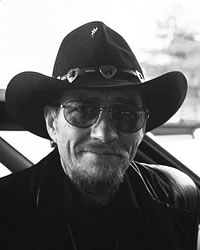 Robert Eads
Robert Eads
December 18, 1945 – January 17, 1999
Robert Eads began transitioning in the late 1980s following a move to Florida. He started testosterone therapy and had top surgery, but because of his age (early- to mid-40s) and the fact that he was showing symptoms of menopause, Eads was told that he would not need a hysterectomy.
In 1996, after moving back to Georgia, Eads suffered severe abdominal pain and vaginal bleeding and received a diagnosis of ovarian cancer. More than two dozen doctors refused to treat Eads because they thought that helping him would harm there practices.
In 1997, Eads was finally treated at the Medical College of Georgia hospital, where he underwent surgical, medical, and radiation therapy over the next year. By 1998, his cancer had spread to his uterus, cervix, and other abdominal organs. He died the following year at the age of 53.
Robert Eads’ life and death was the subject of the award-winning documentary, Southern Comfort.
Lou Sullivan
June 16, 1951 – March 2, 1991
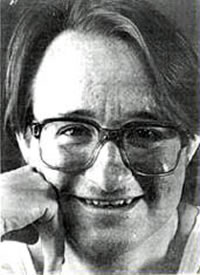 Louis Graydon Sullivan was born in Milwaukee, Wisconsin. He was a pioneering activist who, because he was also gay, played a pivotal role in changing the medical diagnosis and treatment of transsexualism. He was also a major force in creating community for trans masculine people.
Louis Graydon Sullivan was born in Milwaukee, Wisconsin. He was a pioneering activist who, because he was also gay, played a pivotal role in changing the medical diagnosis and treatment of transsexualism. He was also a major force in creating community for trans masculine people.
When Sullivan was 17, he began a long term relationship with a feminine male lover. By 1973, Sullivan was identifying as a “female transvestite,” and launched a career of transgender community activism with the publication of the article “A Transvestite Answers a Feminist,” which appeared in the Gay People’s Union News. A second article published the following year, “Looking Towards Transvestite Liberation,” remains a landmark for its early investigation of gender identity in homosexual culture.
By 1975, Sullivan was identifying as a female-to-male transsexual, and he moved to San Francisco. He was employed as a woman, but spent most of his time living as a gay man. He sought out surgery but was consistently denied because he was gay. As a result, Sullivan became involved in a campaign to remove homosexual orientation from the list of contraindications for SRS.
He published a booklet called Information for the Female to Male Cross-Dresser and Transsexual which disseminated information about finding support groups, counseling, endocrinological and surgical services.
In 1979, Sullivan started taking testosterone and also became a volunteer at the Janus Information Facility (now J2CP), a referral service in San Francisco. He had top surgery in 1980 and started living full time as a gay man. Throughout the 80s, Sullivan continued to wrote about FTM issues in the gay and transgender press, started work on his biography of Jack Garland, and became a popular public speaker.
In 1986, Sullivan had genital reconstruction surgery, and organized what would become FTM International, the first known peer-support group in the U.S. devoted entirely to FTM individuals. Later that year Sullivan was diagnosed with AIDS. He died of an AIDS-related illness on March 2, 1991, at the age of 39.
For more information about Lou Sullivan, explore the Lou Sullivan Society (LSS) website. The LSS has displayed selected materials from Sullivan’s papers in a number of exhibitions, notably “Man-i-fest: FTM Mentoring in San Francisco from 1976 to 2009,” which was open through much of 2010 in the second gallery at the society’s headquarters at 657 Mission St. in San Francisco, and “Our Vast Queer Past: Celebrating San Francsico’s GLBT History,” the debut exhibition in the main gallery at the society’s GLBT History Museum that opened in January 2011 in San Francisco’s Castro District.
Lou Sullivan short film explores the life of a gay transgender pioneer
Trans History Reading Room:
- The Transgender Man Who Fought in the Civil War: The Amazing Life and Tragic End of Albert Cashier
- A Classical F.T.M. – Lucian’s The Dialogue of the Courtesans, from the 2nd Century C.E. [PDF]
- The Transgender Archives: Foundations for the Future – [PDF] Limited edition book published September 2014.
- U.S. Confederate Army General Revealed to Be a Woman
- Trans* History In the U.S. [PPT slides] – Presented at TransOhio 2014 by Eliot Colin, Ian Harris and Finn Lefevre
- Intro to Trans History
- The Transgender Archives at the University of Victoria
- U.S. National Transgender Library & Archives
- Digital Transgender Archive
- Lynn Conway’s Successful Trans Men
- Mercedes Allen’s Six Part Series on Transgender History:
- A Gender Variance Who’s Who
- Black Trans History Compilations
- Transgender American History
- Transsexualism: Mythological, Historical, and Cross-Cultural Aspects
- A Brief History of Transgender Issues
- Tracking Transgender: The Historical Truth
- Research and Historical Essays by Cathryn Platine
- Book: Transgender Warriors by Leslie Feinberg
- Book: Transgender History by Susan Stryker
- Book: How Sex Changed – A History of Transsexuality in the United States by Joanne Meyerowitz
Last updated: 05/15/22


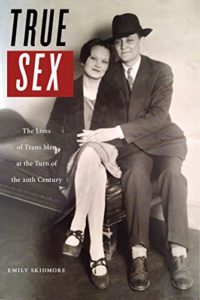
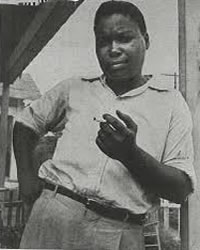


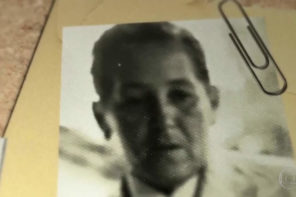
Hello, thank you for including me. The correct information about the East Coast FTM Group is that I founded it in 1992 and it has met continuously since then. The group meets monthly in Northampton, MA and it is currently in its 20th year. It was the very first all-FTM group on the east coast of the United States. In addition to in-person meetings, we have a private Facebook group that all FTMs are welcome to participate in. Just search for “East Coast FTM Group” and request to join. Best, Bet Power
Thanks so much for this great feature and for including me among so many important people who have made such incredible contributions to the community.
@Bet Excellent, thank you for the update! I’ve adjusted the information accordingly, and also added a link to the Sexual Minorities Archives’ FB Page. Thanks so much for maintaining the archives for so many years, very important work!
@Matt You’re welcome, and thank YOU! It is quite an impressive list of people, isn’t it? And it will continue to grow, so much good work is being done.
its unfortunate that this history is focused on white or perceived white FTM folks.
@colt I agree, there should be more non-white as well non-American content here. Aside from Kye Allums, Kylar Broadus, Alexander Goodrum, Ruper Raj (and a couple of the other Change Makers) who do you recommend?
And yes, thank you also for including Alexander John Goodrum, one of the first prominent men of color in the transgender rights movement. The 10th anniversary of his death was last month. I still miss him every day.
Thank you for such an informative publication. For someone like myself, who spent 40+ years thinking I was the ONLY person on earth who felt this way, it’s WONDERFUL to learn about others!! Until 2 1/2 years ago, I didn’t even know there was a word for how I had always felt. To be able to learn about so many others who have faced this and lived successful lives of consequence is liberating.
“In the late 1960s in New York, [trans man] Mario Martino founded the Labyrinth Foundation Counseling Service, which was the first transgender community-based organization that specifically addressed the needs of female-to-male transsexuals.”(http://en.wikipedia.org/wiki/Transgender_American_history)
“Mario Martino wrote the first full length autobiography of an FTM who successfully transitioned with hormones and surgery. His memoir inspired countless FTM readers. He was a healthcare professional and set up a counseling service along with his wife that guided men through the transition process and answered hundreds of letters from readers with questions about transition.” (http://www.ftmi.org/3meetings.htm – FTMI Texas Mario Martino Chapter)
Emergence: A Transsexual Autobiography (1977), by Mario Martino
Steve Dain – “Steve Dain was an FTM who transitioned in the late 70’s and lost his teaching job, he was a gym teacher in Union City. This was a big scandal and made the San Francisco papers, including the gay paper that was then — “Coming Up” instead of “The Bay Times”. I remember being 24, in late 1981, and reading about Steve in the local gay paper “Coming Up” and feeling an odd mixture of shock, excitement and queasy fascination. I remember accounts of him changing his ID, and speculation by the lesbian and gay press as to his motivations for changing his sex from female to male. Of course, I had heard of sex change, even female to male sex change. but what I had heard was vague. Later, I saw a picture of Steve, it was scratchy and dark in the San Francisco Chronicle. I had never, ever seen a photo of an FTM before in my life. I found it disturbing and unspeakably magnetic.” by Max Wolf Valerio 2/28/2008 http://transgroupblog.blogspot.com/2008/02/rip-steve-dain-ftm-pioneer.html
I have a name for your list. From wikipedia:
Ben A. Barres (born Barbara Barres, in 1955) is an American neurobiologist at Stanford University. His research focuses on the interaction between neurons and glial cells in the nervous system. Since 2008, he has been Chair of the Neurobiology department at Stanford University School of Medicine. He changed his sex to male in 1997, and became the first openly transgender scientist in the US National Academy of Sciences in 2013.
I am a man who transitioned over 3 decades ago, and lived in deep stealth until over age 50. I would like to add the following:
http://www.nytimes.com/interactive/projects/storywall/transgender-today/stories/blaine-paxton-hall
http://www.newsobserver.com/news/local/community/chapel-hill-news/chn-opinion/article58663263.html
To say that women who chose to “live as men” were mostly all ‘trans” in the past is nonsense. Many did it because many careers were cut off to women, others were just more masculine and preferred men’s clothing. Many were probably butch lesbians. Being gender defiant is not “trans.” Of course, these women are all dead and can’t defend themselves.
I’m pretty sure the article does not say “that women who chose to ‘live as men’ were mostly all ‘trans” in the past.” This excerpt seems appropriate:
“All too often, the gender identity of historical trans men has been ignorantly or deliberately disregarded–stolen histories. Indeed, calculated efforts were made to erase all record of Hatshepsut’s reign following her death. However, there’s also the risk of erroneously appropriating Hatshepsut’s life story by claiming more than 3000 years later that she was trans. The truth is that we’ll never know for certain how Hatshepsut personally identified, but it’s clear that she went to extraordinary effort to present as a man.”
Thank you so much for this article! As a young ftm it gives me hope to know our community has held strong through the years, and we’re here to stay! It is also wonderful to know that there are transgender people who live successfully into elderly life – we always see representation of young trans people, but for many of us what the future holds for us is unclear. It is validating to know that I am not alone. Again, thank you for the well written and informative article 🙂
THANK YOU FOR THIS!!
Recent research on an old Viking Warrior grave revealed that the warrior was biologically female. Vikings were always known to hold women in high regard and they never had to hide their gender to be powerful or in control. This grave was discovered in the mid-1800, there were no signs of any feminine objects in the grave so they assumed he was a cis man.
https://www.google.com/amp/s/www.history.com/.amp/news/viking-warrior-female-gender-identity